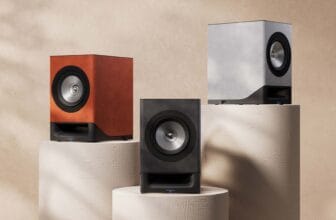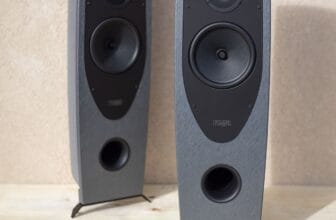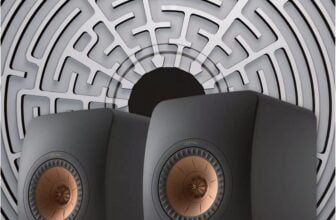SVS Prime Pinnacle Review – Prime minister
Does this sub-£ tower mark the pinnacle for affordable floorstanders? HFC discovers how SVS’ latest loudspeaker fares. Read our SVS Prime Pinnacle Review.
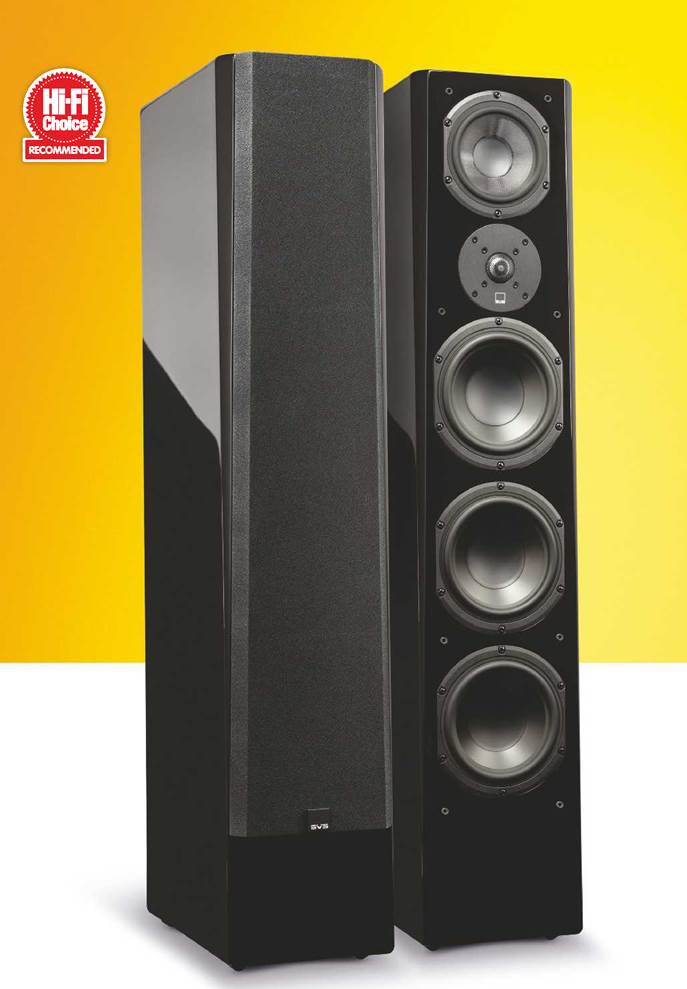
Why should a passion for high-end sonics be an elitist hobby limited to just a small percentage of those fortunate enough to be able splash huge amounts of cash? This was the question SVS hoped to address when it first rumbled onto the hi-fi scene in the US back in 1998. Typical of most new start-ups, the company evolved from the collective passion of a group of audio-loving friends working out of their garage. But where many started off building a standmount or floorstander, it was the deep bass of subwoofers that provided that initial spark. Jump forward 22 years and the company
There’s so much more to this floorstander than just bass brutality
has grown to be one of the best respected sub producers in the world and one of the fastest-growing loudspeaker manufacturers period.
SVS’ design philosophy from day one has been to redefine performance for the price with everything that it produces, and it prides itself on the close community it has been able to build with its users in the US utilising customer feedback to help develop new lines. And so it was that when its enthusiastic fanbase started clamouring for some floorstanders and standmounts to accompany its subwoofers SVS duly obliged.
The company’s current roster of speakers encompasses the top-spec Ultra Series – with the Ultra Tower (HFC 374) the flagship floorstander – and the Prime range from which the Pinnacle you see before you hails. A three-way floorstander with a bespoke midrange unit a trio of bass drivers that you’re unlikely to find elsewhere at the price and a neat 25mm aluminium dome tweeter, the Pinnacle is the very definition of a cabinet that offers maximum bang for your buck.
It’s a challenge that SVS has clearly taken to heart, with the floorstander benefitting from a more extensive voicing process than any other speaker in the company’s history – something necessitated by the inclusion of the new midrange driver and partnering trio of bass drivers.
As Director of Product Management Smith Freeman explains: “During development we explored numerous acoustic alignments, which included various system tunings and driver designs for both the bass and the midrange.” These saw comprehensive experimenting with the mid unit positioned both below and above the tweeter. Eventually the latter option was hit upon as the way to go. “Key parts of this design were balancing out the tweeter height relative to typical listener position, as well as controlling diffraction from both the tweeter and midrange. The best performance objectively and subjectively won, and that’s the design you have here.” Freeman adds.
The new 135mm mid driver sits at the top of the cabinet and marks a change from the norm for the rest of the Pinnacle range, which typically utilise 115mm or 90mm units made from polypropylene. Instead the glass fibre cone that’s also employed by the superior Ultra Tower is trickled down.
Placed directly below the mid driver, the 25mm aluminium dome tweeter boasts an FEA-optimised diffuser claimed to deliver both a wide dispersion and accurate on and off-axis delivery. Beneath this, three 165mm drivers handle the lower frequencies. Individually tuned, they work out of individual 50mm flared rear-facing bass ports. They’re crafted from polypropylene, a material
DETAILS
SVS Prime Pinnacle
ORIGIN USA
TYPE 3-way floorstanding loudspeaker
WEIGHT 26kg
DIMENSIONS (WxHxD) 203 x 1,029 x 340mm
FEATURES
• 25mm alloy dome tweeter
• 135mm composite fibre glass mid driver
• 3x 165mm polypropylene bass drivers
• Quoted sensitivity: 89dB/1W/1m (8ohm)
DISTRIBUTOR Karma-AV Ltd.
TELEPHONE 01423 358846
WEBSITE svsound.com
karma-av.co.uk
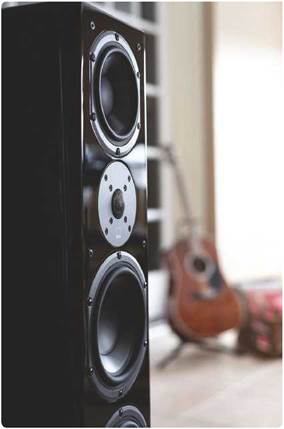
The cabinet is available in black ash or gloss black finishes
chosen by SVS for its stiff but light properties. The choice of this size is no accident and ensures that the width of the cabinet can be kept to a minimum, ticking a major box for the Prime Series ethos of being fit for any environment. The cabinet itself is constructed from MDF and is 25mm thick at the front with the inside split into four separate enclosures with rigid bracing to keep unwanted resonances to a minimum.
Eschewing the current trend for sleek curves, the Pinnacle instead opts for straight, sharp lines with finishes limited to black ash or gloss black. Elastomer feet come fitted as standard, although these can be swapped for the threaded spikes that are also supplied. The grilles that cover the vast majority of the front face are clip-ons rather than magnetic, fitting in with the rather utilitarian looks that remind you that this is a speaker that has been built down to a price.
Sound quality
Opting to put the Prime Pinnacle through its paces with Arcam’s SA30 integrated amplifier that proved so impressive back in issue 462, the full-range rear-ported design of the Prime Pinnacle is naturally best suited to placement away from the sidewalls to avoid excessive boundary gain. You
IN SIGHT
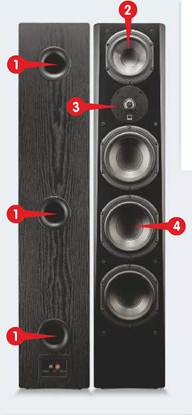
1) 50mm-wide flared bass ports
2) 135mm composite fibre glass mid driver
3) 25mm alloy dome tweeter
4) 3x 165mm polypropylene bass drivers
don’t have to venture too far into the room before the sound becomes direct and unmuddied – a result, no doubt, of the tripple-port design. In the HFC listening room, placing the cabinet slightly toed-in at an angle of around 30° gives the best results. Happily, if you prefer not to toe-in the speaker for practical or aesthetic reasons, the resulting image integrity isn’t impacted too much.
The first thing to note is that despite the presence of those three low- frequency drivers and SVS’ obvious expertise when it comes to subwoofers, there’s so much more to this floorstander than just pure bass brutality. It won’t come as that big a surprise to learn that its handling of lower frequencies is a definite highlight, but this is not at the expense of the mids or highs. Sure, the Prime Pinnacle’s natural proclivity towards the low end is a key part of a soundstage that’s as big and bold as they come, but the performance is neither overblown nor unrefined.
Taking Michael Jackson’s Bad as a starting point, these traits are perfectly illustrated by a performance that is every bit as infectious as it is propulsive and large in scale. The instantly recognisable ascendent bassline that underpins each verse is delivered in an even and fluid nature that remains uncoloured throughout.
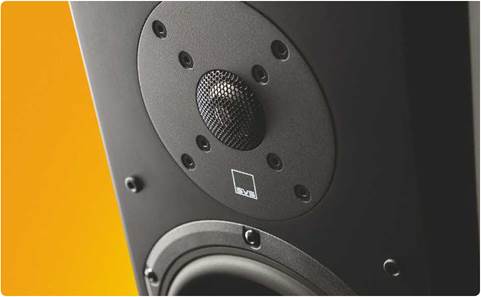
After extensive experimenting, SVS decided to place the tweeter between the mid and bass drivers
Above this the decidedly eighties electronic percussion – accompanied by Jackson’s distinct breathy vocals and hands claps – have a crisp edge and realistic tonality. It’s not the slickest reproduction of the song we’ve ever heard, but it’s certainly convincing enough to be worthy of having a dance off in a parking lot with some mean-looking muthas…
Striving to create the scale of a live stadium performance within the confines of a studio, AC/DC’s Thunderstruck couldn’t be further from the slick sounds of Michael Jackson if it tried. Though undoubtedly one of the Aussie rocker’s better-mixed offerings, the
It can turn its hand to a more measured, sweeter performance when called upon
mish mash of raw noise provides a stern test for any speaker’s powers of separation and control, and the Prime Pinnacle doesn’t disappoint. Key to the track’s success is the repetitive unrelenting pounding that drummer Chris Slade’s tom-tom takes, sounding delightfully taut, immediate and forward in the mix. Meanwhile the synthetic bass notes of London Grammar’s more considered Hey Now once again underline the floorstander’s deft handling of low frequencies, dropping super deep while maintaining a tight grip. SVS’ ability when it comes to getting down and dirty were never really in any doubt, but it’s reassuring to hear enthusiastic confirmation with seismic bass such as this.
Time to tone things down a bit with the semi-acoustic No Excuses courtesy of Alice In Chains. A 16-bit/44kHz Tidal download taken from the Jar Of Flies EP finds the Prime Pinnacle excelling for what is essentially an affordable floorstander. The twin- tracked vocals of Layne Staley and Jerry Cantrell are beautifully delineated with crystal-clear clarity while the percussion – blending rapid snare, high-pitched tom toms and hi-hats into a tight syncopated rhythm – comfortably finds its space. Once again underpinning everything is that deftly delivered bassline. Thanks to the sheer amount of body that’s given to lower frequencies, it sounds lively and agile as opposed to being in any way boomy or sluggish.
True grit
Showing a surprising level of sweetness – as opposed to the attacking sound you’d reasonably expect from a subwoofer manufacturer – The Marshall Tucker Band’s Can’t You See underlines the Prime Pinnacle’s flexibility when it comes to projecting a warm, full-bodied performance. The languid guitar of Toy Caldwell and swirling flute of Jerry Eubanks are spread far and wide across the room as Doug Gray’s plaintive vocals are afforded the grit they deserve. Meanwhile, the smoothness and texture of the piano, acoustic guitar and gently distorted Les Paul suggest that this floorstander is as comfortable with laidback seventies Southern rock as it is with bass-heavy material.
Of course it would be unrealistic to expect a floorstander with such a comparatively affordable price tag to be without its flaws, and in this respect at least, the Prime Pinnacle shows one or two chinks in its otherwise impressive armoury. The stunning guitar solo in Pink Floyd’s Comfortably Numb perhaps best highlighting its inability to match the low end’s forcefulness higher up the frequency band. Dave Gilmour’s guitar work can’t help but sound a little shy, not so much cleaving through the wall of sound as gliding somewhat listlessly around the edges of it. Meanwhile the top layer of incisiveness is lacking and there’s a unavoidable sense that the treble definition could be sharper.
A problem if you’re spending considerably more money, perhaps, but not entirely unexpected at this generous pricepoint, and the way that the authoritative and weighty bass create impressive soundstage depth and width very quickly help paper over these shortcomings.
Conclusion
It probably won’t come as too much of a surprise to learn that coming from a company that has traditionally specialised in subwoofers, the Prime Pinnacle is at its very best when driving forceful, propulsive percussion and bass-heavy material. But it’s by no means a one-trick pony, able to deftly turn its hand to a sweeter, more subtle and measured performance when called upon to do so. There’s no doubt about it, it’s certainly been built down to a price and doesn’t boast the sort of chic ‘look-at-me’ allure of more expensive rivals, but that’s not the point. Svelte enough to fit into the smaller rooms, this is a perfect example of why you don’t have to pay top dollar for a competitive performance. A worthwhile audition for those short on space or on a tight budget
OUR VERDICT
When you purchase through links on our site, I may earn an affiliate commission. Here’s how it works.
HOW IT COMPARES
If you can stretch to £, KEF’s R5 (HFC 460) challenges the Prime Pinnacle head-on. With two bass units allied to a Uni-Q mid/treble, this floorstander is a must-hear. Alternatively, if the Prime Pinnacle’s cost is still a bit high, it’s hard to beat the latest Chora 826 floorstander (HFC 457) from Focal when it comes to ‘sound per pound’. This three- way, four-driver speaker may lack a little of the Prime Pinnacle’s boldness, but is very room friendly and, arguably, rather softer on the eye!
Q&A
Gary Yacoubian
President, SVS

HFC: How difficult was the switch from producing subwoofers to standmounts and floorstanders?
GY: There are distinct differences in the approach to designing subwoofers and we were very aware of that and wanted to avoid the obvious pitfalls. The SVS design principles of reference performance, industry-leading technology and mass price appeal still applied, but we started from scratch with proven speaker designers who shared our passion for amazing sound. At the end of the day, we put just as much of our blood, sweat and tears into designing our loudspeakers as we do our subwoofers and are gratified to see audio fans embrace them.
Can you explain the design process behind the Pinnacle?
To get the performance we wanted, the team went back and fourth on multiple prototypes before hitting the right note with a three-way driver array featuring the midrange driver at the top of the cabinet, SoundMatch crossover and optimising the enclosure with three ports in the rear.
On top of that, we went through a painstaking voicing process to ensure the speaker could render the breathtaking clarity, refinement and pinpoint accuracy that audiophiles crave while delivering massive dynamic impact and deep bass extension for the home theatre crowd. The process was oriented around creating a speaker that could deliver on both fronts.
Do you think there are any real differences between a US and UK-based audience?
Some might argue there is a difference, but at the end of the day all people are looking for an honest reproduction of what the artists intended you to hear. We don’t want to make products for just one country any more than we want a speaker to only produce one genre of music. Keeping that as primary goal means that a great speaker is a great speaker regardless of the playback system, music or national borders.
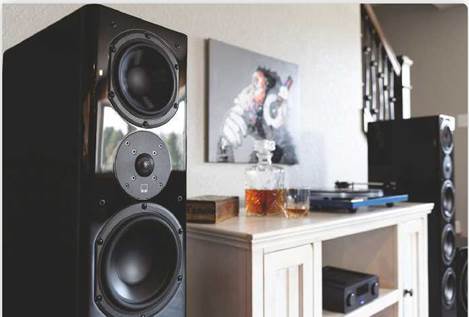
A DISRUPTIVE FORCE
“Music has been my passion literally since before I could talk, or at least so that has been reported to me by my parents! Because of that, the love of great sound has been a part of my life as far back as I can remember, so it is obvious to anyone who knows me why I was drawn to the audio industry,” notes SVS head honcho Gary Yacoubian who started the Ohio-based company with some audio engineer buddies in the late nineties.
Since then the stated aim has always been to reflect a fusion of the best available technology, expert engineering, exhaustive real-world testing and the SVS team’s unrelenting passion for audio excellence.
A common design principle that’s run through the entire subwoofer range from day one has centred on sealed and ported variants, ‘Sledge’ Class D amplifier modules and a single driver (the smallest still a sizable 305mm). More recent innovations have included a Bluetooth app-based parametric EQ system and a wireless transmission platform for simpler integration into two-channel or surround sound systems. The goal remains to “be a disruptive force that challenges the entire audio industry to step up its game” and looks to have been carried over into the company’s active Prime Wireless loudspeakers as well as the Prime and Ultra passive models.





